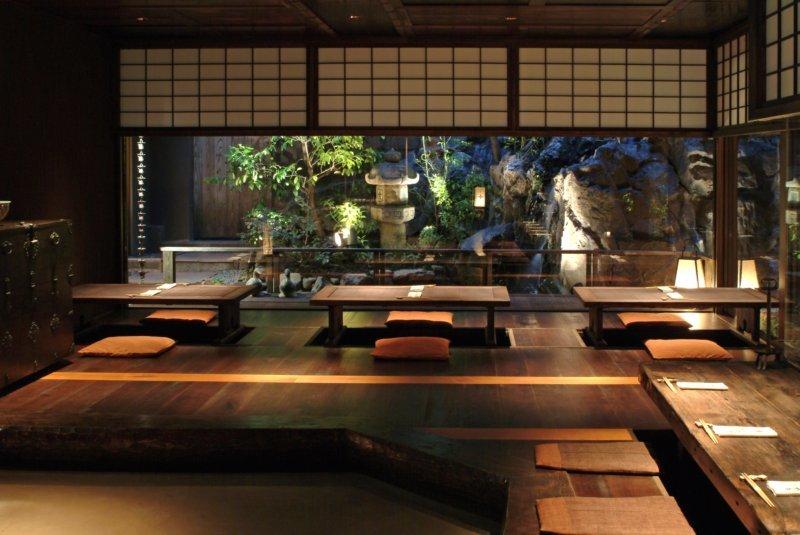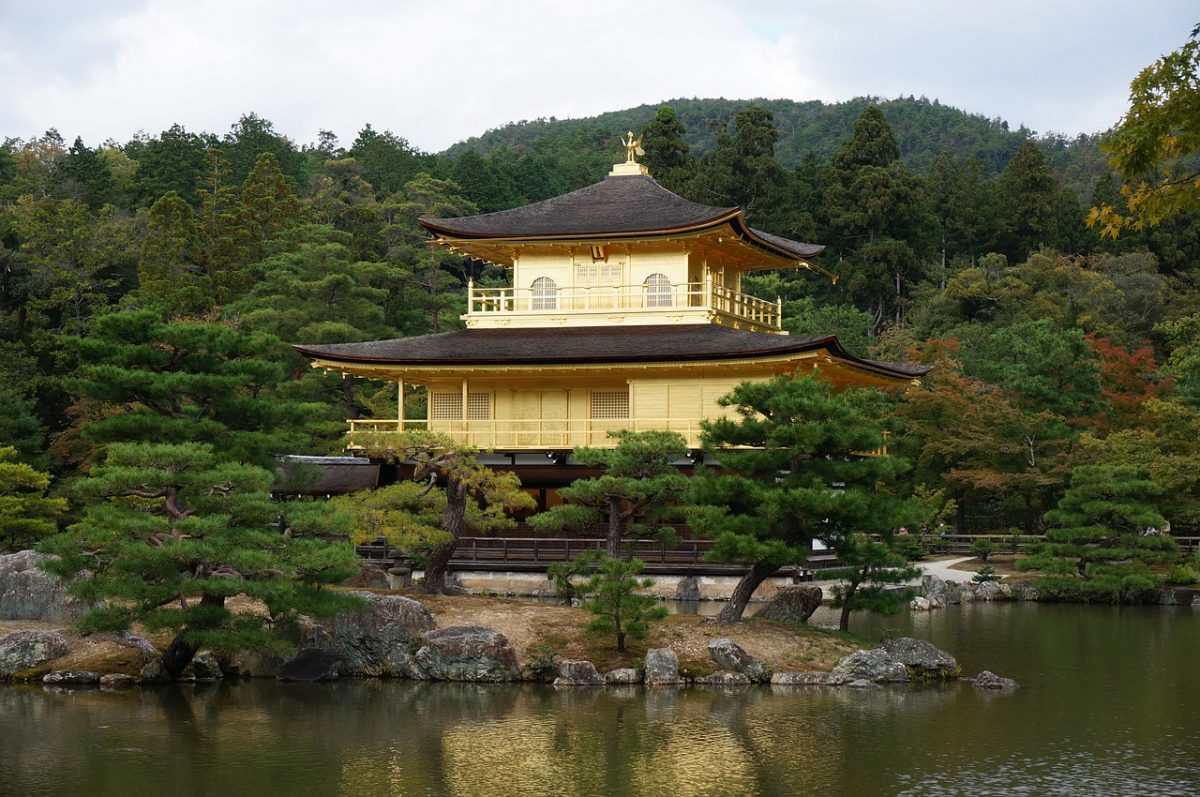Many travellers ask us: what to do in Kyoto? If you are visiting Japan for a week, three days in Tokyo and three days in Kyoto are perfect to explore the two great capitals of Japan: the ancient and the modern one.
Following is a pleasant 3-day Kyoto travel guide, with ideas about what to see, where to go and how to use your Japan Rail Pass to move through the city, its temples, gardens, and geisha alleys. Let us begin!
Table of Contents
Arashiyama Area
Arashiyama Bamboo Grove
If you are visiting Japan for a week and you have just 3 days in Kyoto, make sure to spend one of them in Arashiyama. This is a small town located just 20 minutes away from the city, which makes for a perfect Kyoto day trip.
Take the JR San-ln train line from Kyoto Station to Saga-Arashiyama Station. The JR train ride from Kyoto to Arashiyama takes just 40 minutes. Once there, do not miss out on the Bamboo Groves. The paths that cut through the bamboo groves make for a great walk. Especially during sunset, when the rays of light gently pass through the tall bamboo stalks sway with the wind, creating a view like nowhere else in the world.
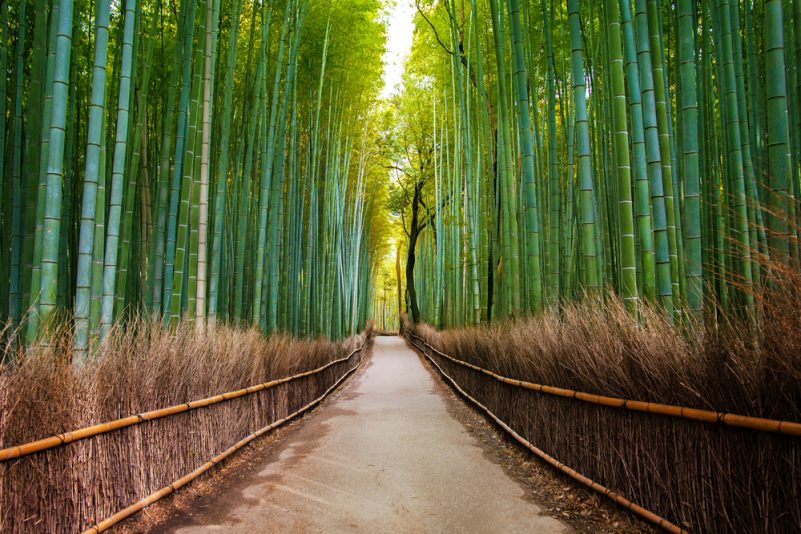
Monkey Park Iwatayama
The park is located in Arashiyama’s mountains, on the left bank of Oi River that flows through this area. You will have to hike up for just 10 minutes, before entering in an open area with over 100 monkeys swaying from three to three.
This park is particularly quite popular among foreign visitors that want to see how the “Japanese macaque” are and behave also known as the “snow monkey”. But also, you will be able to see wild deers and about one hundred species of birds among the trees.
Tip: once at the Iwatayama Monkey Park, take a walk and enjoy the beautiful urban and natural views from up above.
Adashino Nenbutsuji Temple
An ancient temple, created in the 9th century. The ground that surrounds it is covered with the stone statues of the dead. A truly spiritual place, whose back door will take you through a bamboo forest.
Check out our article Arashiyama Bamboo Forest and district for more details.
Southeast area
Fushimi-Inari Taisha
No more wondering what things to do in Kyoto. Whether this is your first time or not, the Fushimi-Inari Shrine is a must-see for all Kyoto visitors. The thousand vermillion torii gates, located at the very back of the shrine’s opening grounds, will lead you to the sacred Mount Inari forest.
Fushimi-Inari Taisha is the most important as well as most visited of the thousands оf shrines dedicated to the Shinto god of rice – Inari Okami (Oinari).
Visitors are free to explore the mountain trails, which the torii gates are spread along, forming a traditional torii tunnel, sneaking through the Japanese mountains. Along the way, you will find a number of smaller shrines, each one unique and beautifully built, in the spirit of ancient Japan. The overall walk takes between 2 and 3 hours. No pressure there, you can turn around and go back anytime you wish.
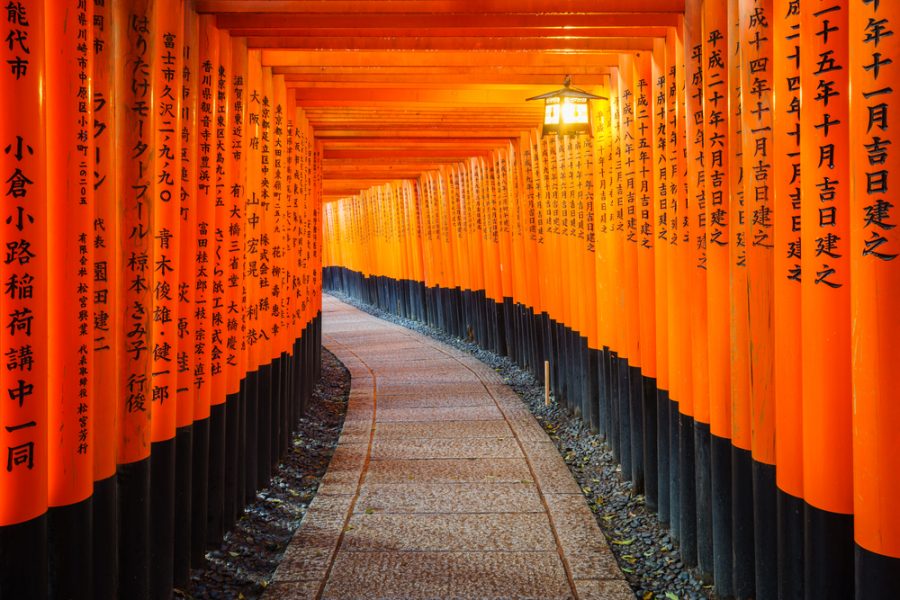
Tofuku-ji Temple
If you are looking for a true Zen temple, with spacious grounds, glorious architecture and barely any tourist activity – you have found it – Tofuku-ji temple.
A curious fact – even though the Tofuku-ji temple is not among the most popular ones in Kyoto – it is, in fact, one of the most famous maple leaf viewing spots in the world. So in case you happen to be around in November, you might stumble upon the unusual crowd.
However, we are merely talking about a single month. While there, make sure to enjoy the Hojo Garden, part of the temple. Each side of Hojo garden bares a beautiful disguise, as if you were in 2 different places.
Gion and Higashiyama Areas
Maruyama Park
Maruyama Park is one of the most popular and distinguished cherry blossom spots in Kyoto. The park is buzzing with tourist admiring the blooming natural colors during the day, while the locals make the most of the scenic sky, filled with shining stars at night.
Kiyomizu-dera Temple
Kiyomizudera (literally “pure water temple”) is one of the most popular temples in Japan. Founded on the year 780 near the Otowa waterfall that gives it its name, it is best know for its wooden stage above the hillside, which provides a beautiful scenery over the cherry and maple trees. This way, it is equally gorgeus both in the spring and autumn colors.
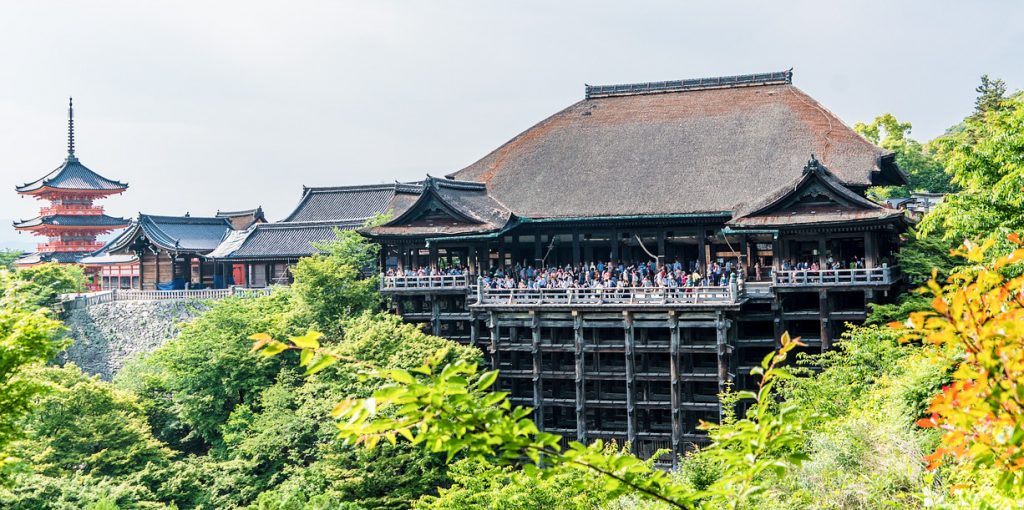
Walk around Gion, the Geisha district
Located between Yasaka Shrine (east) and the Kamo River in the west, Gion is full of shops, restaurants and teahouses, where geiko (Kyoto dialect for geisha) and maiko (geiko apprentices) learn and entertain. If you see a geiko or maiko, please act respectfully.
The Gion area attracts thousands of tourists each year with its lovely traditional wooden merchant houses and the Hanami-koji dining street.
Philosopher’s Walk
Approximately 2 km (1.24 miles) long, the Philosopher’s Path is one of the greatest walking spots in Kyoto. This pedestrian path is made of stones, which is located alongside a riverbed, “decorated” by numerous cherry trees and gardens that spread all the way until the very last stone.
The route has this name because the influential 20th-century Japanese philosopher and Kyoto University professor Nishida Kitaro is thought to walk it daily for meditation. Nearby, you can see several shrines and temples such as Hōnen-in, Ōtoyo Shrine, and Eikan-dō Zenrin-ji.
Besides, the blooming cherry trees covering up the canal make it one of the most celebrated hanami (cherry blossom viewing) spots in the city.
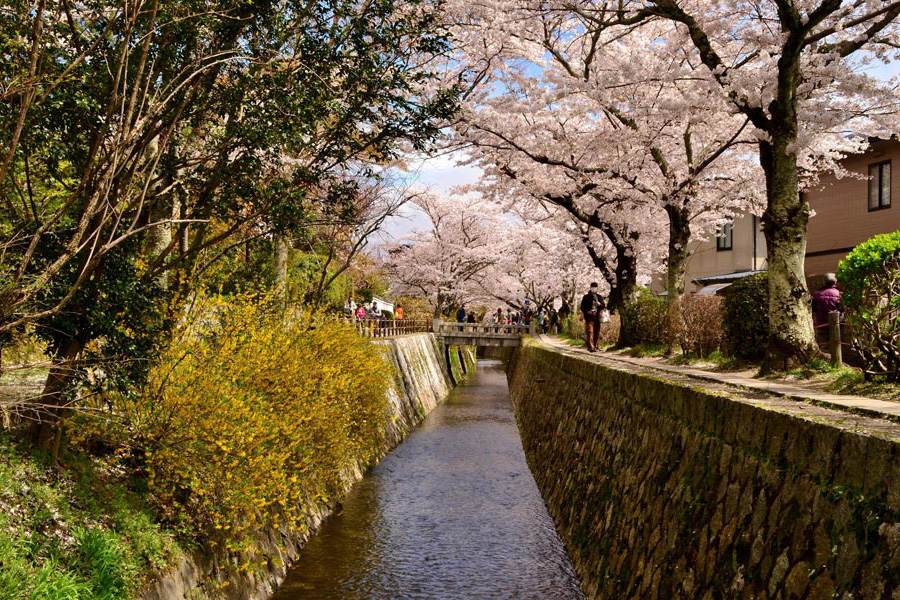
North area
Kinkaku-ji – the Golden Pavillion
Before leaving Kyoto, take some time to visit the golden gem of the city, carrying the name Kinkaku-ji. One of the most impressive Zen temples of Japan, whose top 2 floors are covered in sunshine gold. Logically, visiting the temple on a sunny day is more than recommended.
You can easily get there from the central JR Kyoto Station. Use your Japan Rail Pass and take the JR San-In Line to Emmachi Station. From there the easiest option is to take a taxi for another 10-minute ride. If you rather prefer doing it the local way, wait for bus number 204 or 205. Get off at Pabellon Dorado stop.
Ryoan-ji Temple
Last but certainly not least, pay a visit to the mysterious Ryoan-ji Temple. The most distinguished Zen gardens of Japan is located on its grounds. Observe with your own eyes the mesmerizing mystery that no one has managed to crack throughout the centuries. What is the secret of the
What is the secret of the seemingly randomly placed 15 rocks on the enthralling sea of odd gravel order? Since this is one of the most famous Kyoto stops, we recommend visiting Royan-ji Temple as soon as it opens or just before closing time.
You can easily get there from the central Kyoto stations, using your JR Pass: take the JR San-In Line to Emmachi Station. From there, wait for bus 15 – direction Ryōan-ji stop. Once at the bus stop, you will be approximately 5 minutes walking distance away.
Stay in a traditional Japanese “Ryokan”
Last but not least: book a stay in a Ryokan. These are traditional Japanese-style inns, which would imply that straw tatami mats are used for flooring. Don’t be surprised if you don’t find double king size beds in any ryokan facilities. Traditionally, the Japanese sleep on flat, thin mattresses, spread on the tatami mats.
You are practically guaranteed to be welcomed by friendly Japanese owners, who will love sharing with you their traditions and warm meals. This is the common standard.
